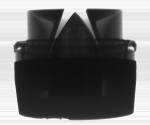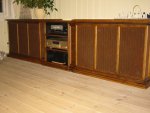Ah, found it, post #106
Not sure about the guy's credentials, and all he ever linked to was Parts Express cut sheets. It'd be interesting to hear what JBL's transducer engineers have to say on his opinion.There is one thing which has always been apparent and is again shown by some studies with these and some other compression drivers- neodymium magnet structures always skimp on the magnet. There are several reasons for this but suffice to say neodymium is never worth the money...so far. These neo transducers seem to almost always lead to much less than ideal results than their ceramic magnet cousins and could lead to false conclusions about driver usefulness and behavior. Use the ceramic for more accurate understandings until the neo magnet type are of the same or better performance than there presently superior cousins.
FWIW, JBL lists the 2446 and 2450 as both being 19,000 gauss. I guess you'd need to measure it to see if they skimped on the 2450.



 Reply With Quote
Reply With Quote












